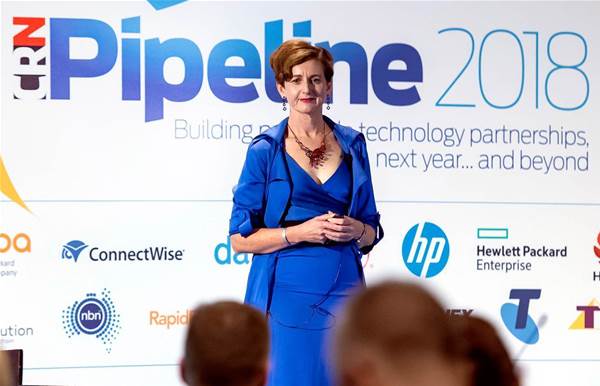As the director of consultancy Lueur, Susan Sly is called in to ensure businesses enjoy smooth technology transformations, acting as a neutral party between integrator and the customer organisation.
The IT veteran, who has worked as the CIO for a number of organisations, including VicRoads, during her tenure of which she received the CIO of the year award, as well as serving in the armed forces, told CRN Pipeline 2018 guests of the delicate balance she works to maintain between buyers and sellers.
“I often stand between internal IT teams and the businesses and try to get them on the same page, but in particular, what I’m often doing is actually helping companies work better with the IT industry, either to go to market in a really constructive way or when there is friction or perhaps a divergence of objectives between a vendor and a client,” Sly says.
Sly identifies some common views expressed by buyers and suppliers about driving technology change.
- Business owners want to leverage technology, but, "The IT team just say ‘no’," or, "We’re locked into vendors who are expensive and don’t listen".
- Internal IT teams are often frustrated and know they can do more but lack the frameworks to do so.
- Technology suppliers and implementers have great products and expertise, but “they don’t listen to us” or “we know what we’re doing; they should just give it to us”.
Five key principles
When it comes down to it, Sly says technology buyers want services, integration and data driven decisions. They are far less interested in technology specs than the benefits.
“Buyers, suppliers and IT teams need to work together in sophisticated ways to stay ahead of the competition. If it comes down to one of these teams against the others, nobody wins,” she says.
When working with clients, Sly has identified five principles that mark successful technology-based relationships:
1 IT suppliers need to help upskill clients – implementing new technology and skills are bread and butter for IT companies. For clients it might be a one in 5-10 year experience, so advise them in what skills and practices they need to change.
2 When a business can’t function with the technology on offer, it’s important – it doesn’t matter if “it’s working as it’s meant to” if the client’s profitability is about to go down the tubes. Find what it takes to work in their environment.
3 New technology is not about turning on the switch – it changes the skills needed, support processes and potentially the whole operating model. Think about all the things needed to optimise performance and to keep evolving, not just the new application or service in isolation.
4 Change has two endpoints – selling the dream is great, but someone has to clear the lot and lay the foundations. What the supplier, client IT team and business users do when something is fully implemented might be the same across the world, but the journey to get there may be completely different. Actively engage the whole client team in design and implementation planning and the journey will be much easier.
5 Play nicely with others – no technology nowadays works in isolation. The interactions between suppliers, the support processes across system boundaries and genuine engagement between users, business owners and the support teams are paramount.
“I am yet to encounter a business owner, IT team or supplier who is not committed to successful outcomes. Sometimes they just need to ask the right questions, listen to the answers and find the island in the middle that everyone can stand on,” Sly says.





.png&h=142&w=230&c=1&s=1)







.jpg&w=100&c=1&s=0)







.jpg&q=95&h=298&w=480&c=1&s=1)



